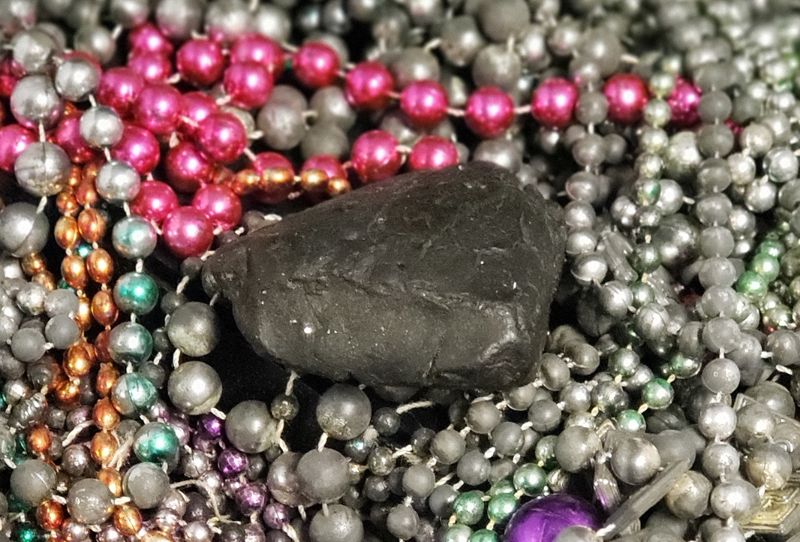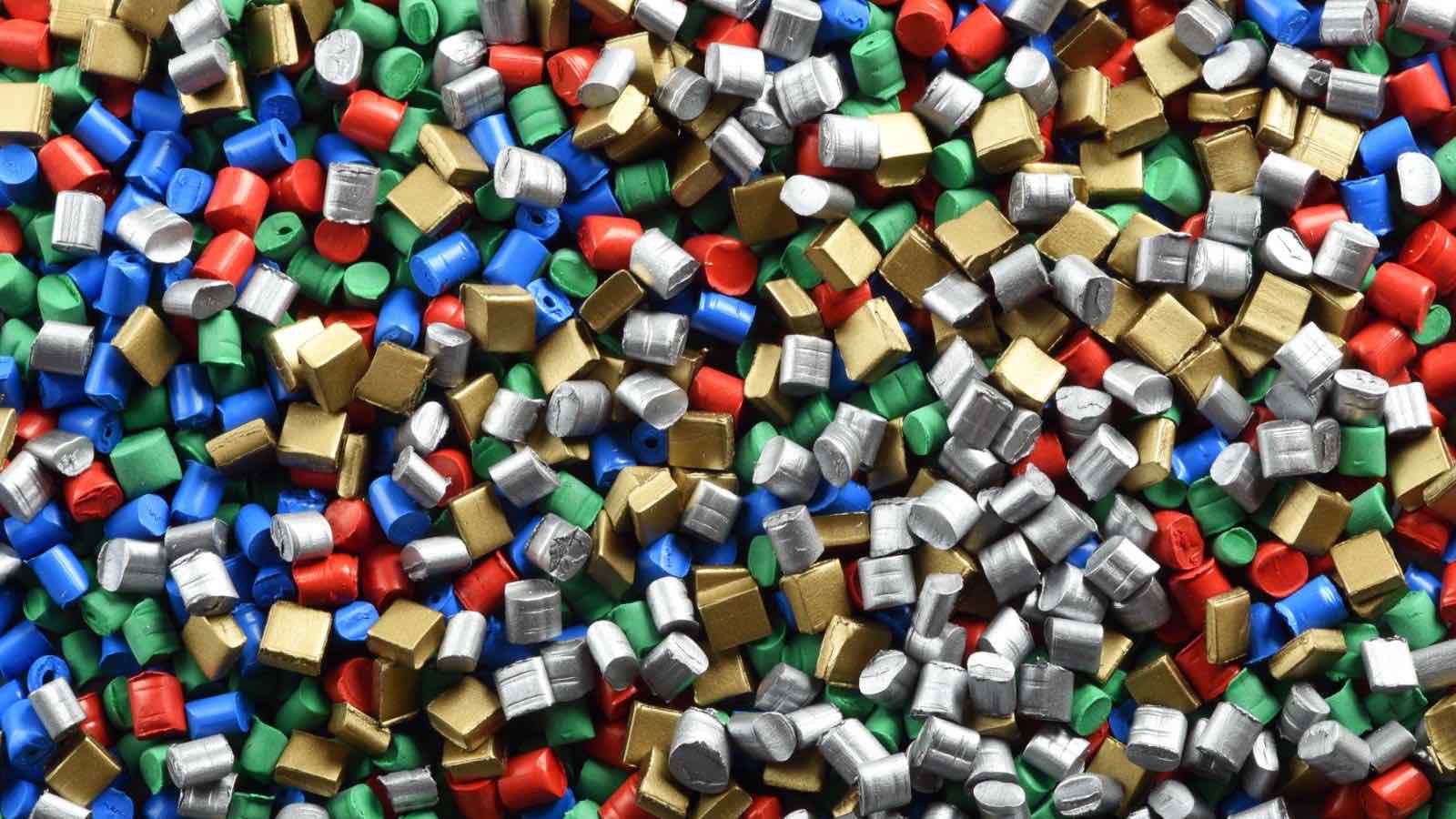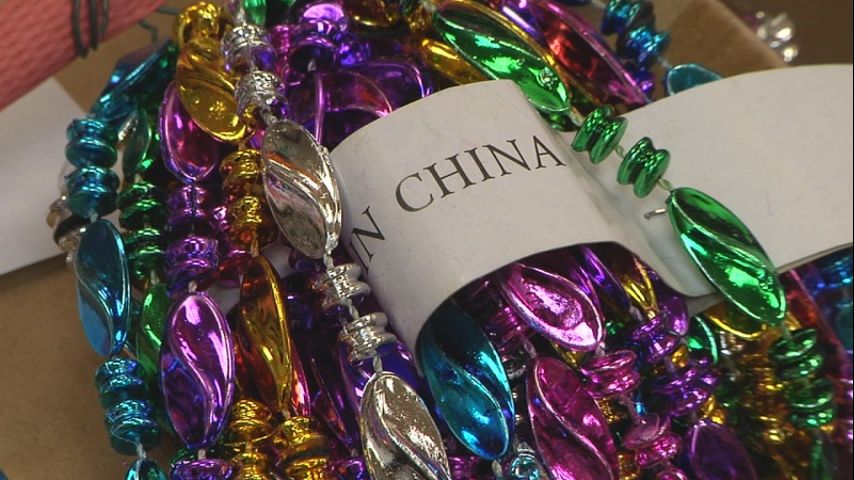Follow Along On
The Path Of A Bead

The Path Of A Bead
From The Earth's Crust To The Parade Route
While many people think plastic beads are ubiquitous with Mardi Gras, they didn’t actually become a tradition until the 1970s, over 100 years after the first Mardi Gras celebration in New Orleans!
From oil extracted from deep inside the Earth’s crust to the parade route, the path of a Mardi Gras bead is long and destructive, both to our environment and our health!
The Path Of A Bead
The Journey Begins In The Earth's Crust
Like all petroleum based plastic, the journey for most Mardi Gras beads begins with oil from the Gulf of Mexico, the Middle East, and elsewhere around the globe.
The Path Of A Bead
Refined & Processed from Oil To Plastic Pellets
After the oil is extracted from the Earth, it is processed into Polystyrene & Polyethylene pellets, which are the raw materials used in many plastic-based products
Once the pellets are formed, they are packaged and shipped to China, where the vast majority of all Mardi Gras beads are made.
The Path Of A Bed
Made In China Cheap & Toxic
The Path Of A Bead
Sea Freight From china To The U.S.A
Carbon Footprint
Mardi Gras beads are shipped across the ocean twice, once as plastic pellets, and once as beads. These supply-chain inefficiencies increase their carbon footprint.
Costly Emmisions
The sea freight industry emits roughly 800 million tons of carbon dioxide per year. This equates to roughly 4% of all greenhouse emissions per year.
The Path Of A Bead
From St. Charles To The French Quarter
The Path OF A Bead
25 million pounds of beads Thrown Only 2% are Recycled
Today, roughly 25 million pounds of petroleum-based plastic beads are thrown every year, despite the beads not becoming a tradition until the 1970s.
Not only do these beads have a massive carbon footprint, but research shows that they are also highly toxic as well.
It is estimated that those beads contain around 920,000 pounds of mixed chlorinated and brominated flame retardants, and up to 10,000 pounds of lead.
The Path Of A Bead
We Think It's Time To Rethink Mardi Gras Beads
The carbon footprint from the ocean crossings and transcontinental shipping of the beads to New Orleans is significant enough!
Since the inevitable destination of chemical laden beads are landfills and/or waterways, is it time to rethink what is thrown?
Verdi Gras
The Path Of A Bead
The Path Of A Bead
From The Earth's Crust To The Parade Route
While many people think plastic beads are ubiquitous with Mardi Gras, they didn’t actually become a tradition until the 1970s, over 100 years after the first Mardi Gras celebration in New Orleans!
From oil extracted from deep inside the Earth’s crust to the parade route, the path of a Mardi Gras bead is long and destructive, both to our environment and our health!

The Path Of A Bead
Refined & Processed from Oil To Plastic Pellets
Like all petroleum based plastic, the journey for most Mardi Gras beads begins with oil from the Gulf of Mexico, the Middle East, and elsewhere around the globe.

The Path Of A Bead
The Journey Begins In The Earth's Crust
After the oil is extracted from the Earth, it is processed into Polystyrene & Polyethylene pellets, which are the raw materials used in many plastic-based products
Once the pellets are formed, they are packaged and shipped to China, where the vast majority of all Mardi Gras beads are made.

The Path Of A Bead
Made In China Cheap & Toxic

The Path Of A Bead
Sea Freight From China To the U.S.A
Mardi Gras beads are shipped across the ocean twice, once as plastic pellets, and once as beads. These supply-chain inefficiencies increase their carbon footprint.
It is estimated that the sea freight industry emits roughly 800 million tons of carbon dioxide per year, equating to roughly 4% of all greenhouse emissions per year.

The Path Of A Bead
25 million pounds of beads Thrown Only 2% are Recycled
Today, roughly 25 million pounds of petroleum-based plastic beads are thrown every year, despite the beads not becoming a tradition until the 1970s.
Not only do these beads have a massive carbon footprint, but research shows that they are also highly toxic as well.
It is estimated that those beads contain around 920,000 pounds of mixed chlorinated and brominated flame retardants, and up to 10,000 pounds of lead.

The Path Of A Bead
We Think It's Time To Rethink Mardi Gras Beads
The carbon footprint from the ocean crossings and transcontinental shipping of the beads to New Orleans is significant enough!
Since the inevitable destination of chemical laden beads are landfills and/or waterways, is it time to rethink what is thrown?








